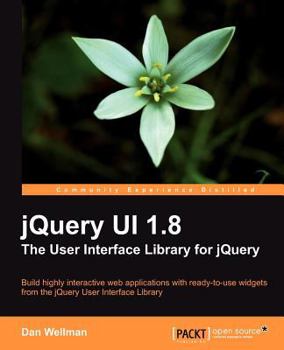jQuery UI 1.8: The User Interface Library for jQuery
Select Format
Select Condition 
Book Overview
An example-based approach leads you step-by-step through the implementation and customization of each library component and its associated resources. Reference tables of each configuration option, method, and event for each component are provided, alongside detailed explanations of how each widget is used. This book is for front-end designers and developers who need to quickly learn how to use jQuery UI. To get the most out of this book you should have a good working knowledge of HTML, CSS, and JavaScript, and should ideally be comfortable using jQuery. This description may be from another edition of this product.
Format:Paperback
Language:English
ISBN:1849516529
ISBN13:9781849516525
Release Date:August 2011
Publisher:Packt Publishing
Length:424 Pages
Weight:1.30 lbs.
Dimensions:0.9" x 7.5" x 9.3"
Related Subjects
Business & Management Client-Server Systems Computer Science Computers Computers & Technology Data in the Enterprise Databases Education & Reference Languages & Tools Methodology Networking Parallel Processing Computers Programming Programming Languages Software Design & Engineering Software Design, Testing & Engineering Software Development Software EngineeringCustomer Reviews
5 customer ratings | 5 reviews
There are currently no reviews. Be the first to review this work.





















